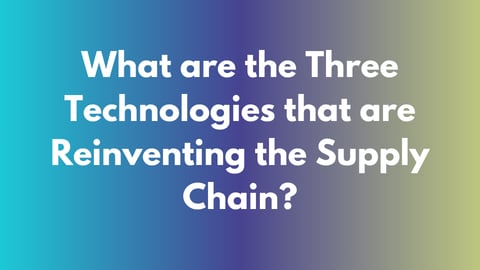How Blockchain and AI Can Future-Proof the Supply Chain Against Viral Threats
As consumers hunker down at home because of COVID-19, their spending on packaged retail food items has surged — and common commodity growth is predicted to continue at an average of 15% to 30% through May. Supply and retail companies continue to deliver, but there’s no doubt the supply chain is feeling the strain. To keep up, now and in the future, something needs to change.
Consumer goods companies should use the current situation as an opportunity to reevaluate. The COVID-19 pandemic has shown consumer demand can shift in an instant, sounding a wake-up call to any company resistant to change. As CPG leaders and logistics professionals, we need to rethink our strategies and resourcing in manufacturing, production and inventory management — with an eye toward choosing technology that can lessen the strain on the supply chain now and future-proof operations going forward.
If predictions hold true, COVID-19 may reemerge even stronger in late 2020, and future pandemics may be an inevitable part of our new “normal.” As it stands, two broad technology trends — artificial intelligence (AI) and blockchain — will be key in helping us manage unpredictable spikes in consumer demand caused by social distancing and public health mandates.
AI and blockchain are the keys to a more agile supply chain
The consumer goods industry shares the struggle many industries now face — a lack of real-time supply chain data. While cracks have been showing for years — food recalls are a good example — we still have blind spots at certain points in the supply chain with no good solution in sight.
See also: CBA Spearheads Critical Infrastructure Supply Chain Council
However, when we look at the strain on supply chains due to COVID-19, it’s abundantly clear that emerging AI and blockchain applications could revolutionize how we make business decisions during a crisis.
Leveraging AI to “clean up” supply chains: Increased demand from online shopping has exposed major disorganization in some supply chains. The sudden spike in demand for groceries, health and wellness, and janitorial and paper goods product deliveries extend way beyond normal consumer behavior. And every order beyond-normal demand requires more packaging, raw material, labels, and logistics support throughout the supply chain.
However, we can better prepare for increased demand by tapping enterprise resource planning (ERP) and its inventory management solution that harness AI. These tools can predict when shortages are possible and notify if material prices are surging or gaps in the supply chain are imminent. They can also proactively inform up or downstream partners in the supply chain, leading to fewer ripple effects during uncertain times.
Using blockchain for real-time decision making and intelligence: Before COVID-19, we were already acutely familiar with the risks of low visibility into the food supply chain. Food recalls like those for romaine lettuce and frozen berries in 2019 showed the need for better traceability. In the same way it helps combat foodborne illnesses, blockchain could serve as an ally in fighting the uncertainty caused by viral infections like COVID-19.
During the early months of 2020, proper testing has emerged as essential in the fight against the virus, but critical shortages have occurred. In some cases, testing kits are readily available, but the reagents to process them are not. In other cases, shortages of cotton swabs are creating delays in testing, and poorly cataloged reserve equipment is causing further frustration.
Blockchain can fill these gaps and increase transparency by creating a permanent and unalterable record for each piece of equipment and medical product. Storing life-saving information on the blockchain — such as expiration dates, special instructions, use history, and condition data for equipment and medical stockpiles — gives those on the frontline strategic information about supplies when they need it.
AI and blockchain will allow CPG to ensure essential products are available in the right place and at the right time during a crisis, and proactively identify breaks in the supply chain. With demand rising, we must seriously consider how this technology fits into our operations and can benefit downstream customers.
While a global pandemic might not be the most ideal time to retool our business models, it’s certainly the time when our investments make the most impact.
Kevin Beasley is CIO at VAI.




